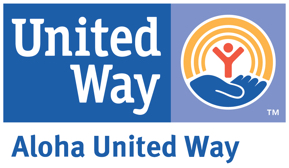Hawaii Tribune-Herald
Partnership to dispense nearly $5M to help homeless and at-risk
June 27,2016
Print/Online
By Max Dible
The number of homeless in Hawaii has increased starkly in each of the last 5 years and is expected to list at all-time highs when a new Point-In-Time Count is released Wednesday. The projections have left state officials searching for creative solutions that can stem the swelling problem with atypical haste.
One such measure is a public/private partnership between Hawaii and Aloha United Way to dispense nearly $5 million to those teetering on the edge of homelessness through a Rapid Re-Housing Program (RRH), which is part of the Coordinated Statewide Homeless Initiative.
“Over the past few years, the homeless situation has risen to the point of a statewide emergency,” said Scott Morishige, Hawaii State Homeless Coordinator. “The CSHI program enables AUW to sub-contract with its partner agencies across Hawaii and to distribute resources much faster than would be possible through a typical government contract.”
RRH is a permanent housing initiative aimed at keeping indoors those people facing precarious housing situations, while also helping homeless ready to move off the streets by providing them the last needed boost to secure a roof over their heads.
“Individuals or families wishing to participate have to be considered at-risk or homeless,” said Kuuipo Keopuhiwa, an intake specialist with the Housing and Referral Program at Catholic Charities Hawaii. “At-risk means they have received a letter from their landlord saying they’re either being evicted or displaced. Homeless goes according to HUD’s guidelines — individuals or families who lack fixed, regular and adequate nighttime residence.”
Unlike other permanent housing initiatives, such as the micro-housing units being erected in the Old Kona Industrial Area, RRH is not necessarily focused on the chronically homeless. Instead, the funds come with the caveat of sustainability, which means different things for different people. In several cases, it may mean relocation.
“We’re not saying you should be moving into a smaller space, but on the other hand, if that is part of the sustainability plan, then that is something the family would have to agree to,” said Cindy Adams, President and CEO of AUW.
It stands to reason that a family on the brink of eviction could simply downgrade to a smaller space, and even if their cash flow is affected by the loss of a job or a scale back in pay, a few payments made from pockets other than their own might reasonably be enough to keep them sheltered.
But for those already classified as homeless, qualifying under a sustainability standard appears a less likely proposition. Adams said that’s not necessarily the case, however.
“Because this is rapid re-housing, the homeless side of this equation means they already have a plan that demonstrates sustainability and maybe have been saving up for two months and just need a little bit more to get into a home. This funding allows them to do that,” Adams explained. “It’s not taking somebody who just moved into an emergency shelter last night and getting them into permanent housing, because they probably have a little ways to go to set themselves up as sustainable.”
There is no cap on the amount of money an individual or a family is eligible to receive, only a cap on the number of payments. AUW can make up to three payments, including a security deposit, to help those who qualify either get off the streets or avoid finding themselves there in the first place.
Individual and family qualifications are determined by local case managers and the employed are not the only demographic eligible. Seniors on Social Security, people on disability and those with other forms of income may also be able to take advantage of RRH.
Thus far, the results have been promising. AUW has subcontracted 18 organizations across the Hawaiian islands to handle case work and distribute monies. In only two months, RRH has serviced 667 individuals across 227 households, according to AUW’s website at www.auw.org.
The amount of money spent and people served has already exceeded what would normally be achieved in an entire year, Morishige said, adding he expects the money will service 1,200 to 1,300 households statewide. But perhaps that shouldn’t come as much of a surprise considering the substantial influx of cash to the program.
RRH isn’t new. It’s been around for several years, historically managed county to county by AUW branches under the Federal Emergency Food and Shelter Program, Adams said.
In 2015, however, the entire state received only $250,000 for RRH efforts. The state grant to the program after Gov. Ige’s emergency proclamation in October of last year increased that amount nearly 20-fold in 2016.
AUW has allocated $4.7 million for the project, which is split in two ways. Half of the money goes to those currently housed to help curb the rising homeless tally, while the other half will serve those already homeless. Half of the award is earmarked for Oahu, where homeless numbers are greatest, and the other half is being distributed across neighbor islands.
On Hawaii Island, which received only $61,500 of the $250,000 allocated in 2015, the AUW subcontracts RRH implementation to Catholic Charities Hawaii, Hawaii County Economic Opportunity Council and the Hawaii County Office of Housing and Community Development.
The efforts should make the 2017 Point-In-Time Count numbers on the homeless demographic more favorable, but as a one-year gift, questions about the long-term impact of RRH remain. Morishige said pending overall results, however, a more steady stream of cash may be allocated to RRH and similar homeless programs.
“The CSHI will be evaluated by the Department of Human Services, and weekly data is reported by AUW to the department to evaluate the program’s impact on a real-time basis,” Morishige said. “While the CSHI program in particular is one-time, the state is looking to increase levels of funding for Rapid Re-Housing and housing focused interventions, such as Housing First, in the department’s base budget for homeless services.”
